 This story from Haruki Murakami paints a bleak picture of the troubled lives of a young woman (Junko) and the middle-aged artist (Miyake) who befriends her. The pair bond over bonfires Miyake constructs on a beach. Both appear to be trying to escape unstated traumas from their past, and could possibly be suffering from PTSD. Their lives are contrasted with that of Junko’s boyfriend, a carefree surfer and musician. Set a month after the devastating 1995 Kobe earthquake, major themes include the meaning and uncertainty of life and, of course, death. Other themes are artistic inspiration, family, emptiness and suicide. More…
This story from Haruki Murakami paints a bleak picture of the troubled lives of a young woman (Junko) and the middle-aged artist (Miyake) who befriends her. The pair bond over bonfires Miyake constructs on a beach. Both appear to be trying to escape unstated traumas from their past, and could possibly be suffering from PTSD. Their lives are contrasted with that of Junko’s boyfriend, a carefree surfer and musician. Set a month after the devastating 1995 Kobe earthquake, major themes include the meaning and uncertainty of life and, of course, death. Other themes are artistic inspiration, family, emptiness and suicide. More…
Category Archives: Short Stories
The Last Rung on the Ladder
 If you are expecting to be frightened by this Stephen King story, you are in for a disappointment. However, if you are the emotional type, the heart-breaking conclusion could move you to tears. The protagonist and his younger sister were once very close and shared a life-threatening adventure involving a broken ladder. The girl’s comment afterwards: I knew you must have been doing something to fix it. You’re my big brother. I knew you’d take care of me. Later in life, as the man is busy climbing a different ladder, he is not there to take care of her. More…
If you are expecting to be frightened by this Stephen King story, you are in for a disappointment. However, if you are the emotional type, the heart-breaking conclusion could move you to tears. The protagonist and his younger sister were once very close and shared a life-threatening adventure involving a broken ladder. The girl’s comment afterwards: I knew you must have been doing something to fix it. You’re my big brother. I knew you’d take care of me. Later in life, as the man is busy climbing a different ladder, he is not there to take care of her. More…
Haircut
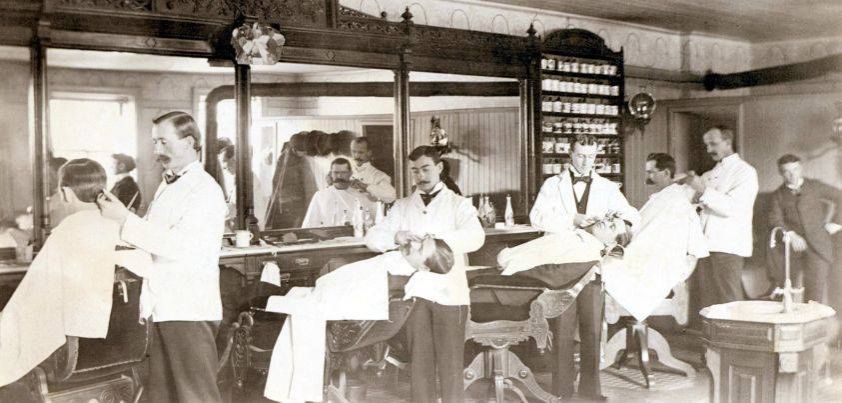 This story by Ring Lardner shows how satire can be used to raise awareness of problems in society. A small-town barber talks to a visitor about local life. The barber seems to think the town is a good place to live. However, the stories he tells suggest otherwise… especially if you are a woman or impaired in some way. Most of the barber’s stories are about a dead customer who he says had a kind heart but just liked to have fun with people. We hope you can see that the customer was not kind at all! More…
This story by Ring Lardner shows how satire can be used to raise awareness of problems in society. A small-town barber talks to a visitor about local life. The barber seems to think the town is a good place to live. However, the stories he tells suggest otherwise… especially if you are a woman or impaired in some way. Most of the barber’s stories are about a dead customer who he says had a kind heart but just liked to have fun with people. We hope you can see that the customer was not kind at all! More…
The Erlking
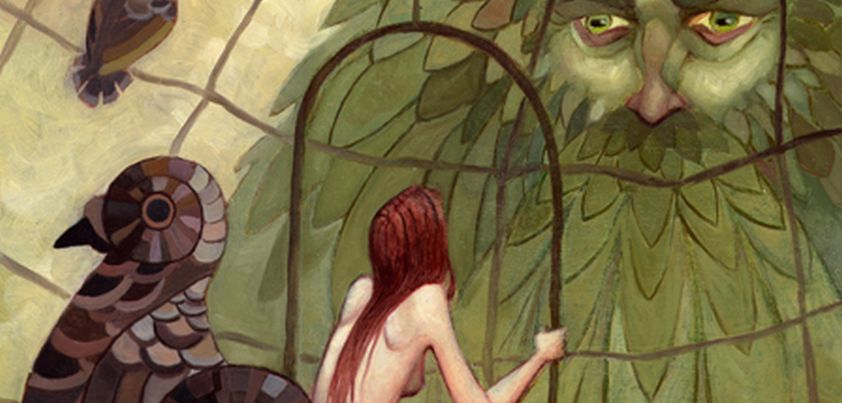 This “fairy-tale” by Angela Carter is derived from a European myth. A magical being living in harmony with nature seduces young women traveling through his forest domain. The women are powerless to resist. When he tires of one, he transforms her into a bird, cages her, and adds the cage to a collection of similar cages adorning the walls of his house. The protagonist, sensing her fate, decides that the only way to free herself and his “bird” collection is to do away with him. Themes include connectedness to nature, the supernatural, power and objectification, sexuality, entrapment, liberation. More…
This “fairy-tale” by Angela Carter is derived from a European myth. A magical being living in harmony with nature seduces young women traveling through his forest domain. The women are powerless to resist. When he tires of one, he transforms her into a bird, cages her, and adds the cage to a collection of similar cages adorning the walls of his house. The protagonist, sensing her fate, decides that the only way to free herself and his “bird” collection is to do away with him. Themes include connectedness to nature, the supernatural, power and objectification, sexuality, entrapment, liberation. More…
Silent Snow, Secret Snow
 Conrad Aiken’s Silent Snow, Secret Snow is a psychological horror fantasy. It begins with a twelve-year-old boy (Paul) imagining overnight snowfalls. This leads to a growing fascination with snow, the thought of which provides relief from the mundane routine of his daily life, the ugliness of the world around him, parent-child conflicts, and awakening sexuality. As the imagined snowfalls increase, Paul begins to lose touch with reality. In the disturbing climax, his boy’s “snow voices” come alive and he completely withdraws into himself as they tell him a story. Major themes: mental illness, concealment, detachment and alienation. More…
Conrad Aiken’s Silent Snow, Secret Snow is a psychological horror fantasy. It begins with a twelve-year-old boy (Paul) imagining overnight snowfalls. This leads to a growing fascination with snow, the thought of which provides relief from the mundane routine of his daily life, the ugliness of the world around him, parent-child conflicts, and awakening sexuality. As the imagined snowfalls increase, Paul begins to lose touch with reality. In the disturbing climax, his boy’s “snow voices” come alive and he completely withdraws into himself as they tell him a story. Major themes: mental illness, concealment, detachment and alienation. More…
The Magic Barrel
 In this humorous story from Bernard Malamud a rabbinical student, a matchmaker, and an errant young woman with “desperately innocent” eyes are all potential winners. The story is as much about the young, introverted rabbi-to-be’s spiritual emptiness as it is his desire to find a wife. His first meeting with a potential match reveals an embarrassing truth: he can’t explain the reason for his calling. He feels a need to re-invent himself, and finds a path to possible redemption in the photograph of a woman whose face carries an “impression of evil”. Themes: tradition, materialism, loneliness, identity, religion, love, redemption. More…
In this humorous story from Bernard Malamud a rabbinical student, a matchmaker, and an errant young woman with “desperately innocent” eyes are all potential winners. The story is as much about the young, introverted rabbi-to-be’s spiritual emptiness as it is his desire to find a wife. His first meeting with a potential match reveals an embarrassing truth: he can’t explain the reason for his calling. He feels a need to re-invent himself, and finds a path to possible redemption in the photograph of a woman whose face carries an “impression of evil”. Themes: tradition, materialism, loneliness, identity, religion, love, redemption. More…
Araby
 It is tempting to think the central theme of this story by James Joyce is an adolescent boy’s infatuation with a friend’s older sister. However, the title gives it away. The main theme, brought about by the boy’s wish to impress the girl, is his obsession with visiting the Grand Oriental Fete (Araby). The story helps us vicariously re-live our own Arabies. Whether it be a relationship, work opportunity or important event, we all have experiences where something much looked forward to greatly disappoints. We know how the boy feels! We know how the boy feels! Other themes: alienation, loneliness, religion, vanity, disillusionment. More…
It is tempting to think the central theme of this story by James Joyce is an adolescent boy’s infatuation with a friend’s older sister. However, the title gives it away. The main theme, brought about by the boy’s wish to impress the girl, is his obsession with visiting the Grand Oriental Fete (Araby). The story helps us vicariously re-live our own Arabies. Whether it be a relationship, work opportunity or important event, we all have experiences where something much looked forward to greatly disappoints. We know how the boy feels! We know how the boy feels! Other themes: alienation, loneliness, religion, vanity, disillusionment. More…
How My Brother Leon Brought Home a Wife
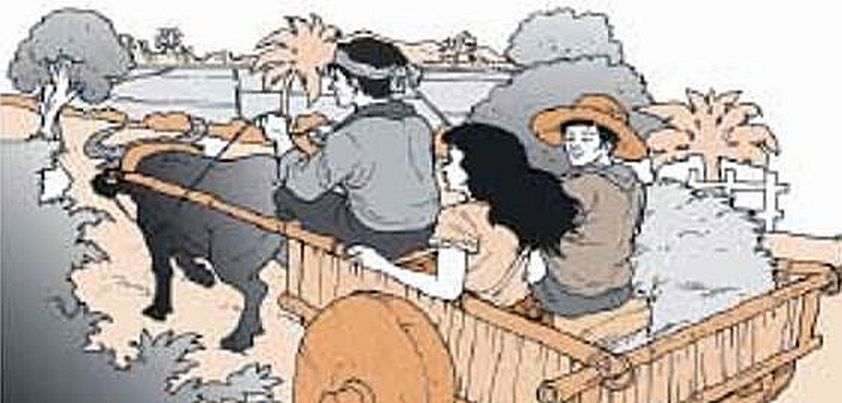 In this popular Filipino story from Manuel E. Aguilla, a son brings his city-based bride home to the countryside to “meet the family”, only to have the poor woman tested by his father before she even arrives. The father has his younger son meet them with a bullock cart rather than horse and carriage, and bring them home via a stony “short-cut” along a dry creek bed rather than the smoother main road. The apprehensive but charming girl (in high heels no less!) passes the tests with flying colors. Themes: love, fear, perseverance, patriarchy, reputation. More…
In this popular Filipino story from Manuel E. Aguilla, a son brings his city-based bride home to the countryside to “meet the family”, only to have the poor woman tested by his father before she even arrives. The father has his younger son meet them with a bullock cart rather than horse and carriage, and bring them home via a stony “short-cut” along a dry creek bed rather than the smoother main road. The apprehensive but charming girl (in high heels no less!) passes the tests with flying colors. Themes: love, fear, perseverance, patriarchy, reputation. More…
The Postmaster
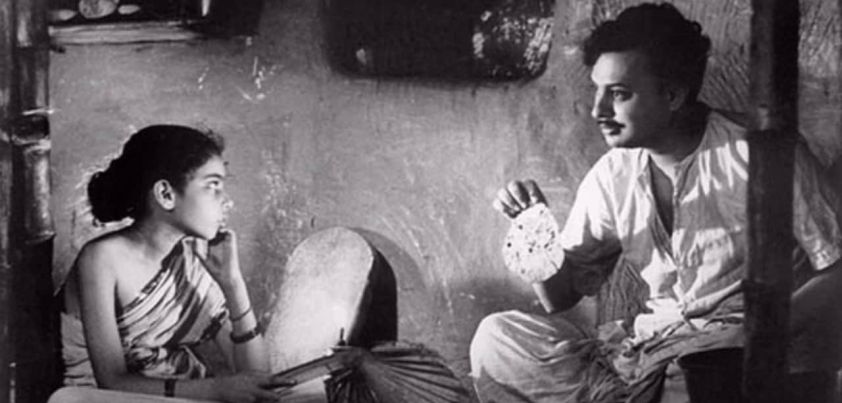 For me, the major theme of this Rabindranath Tagore story is the insensitivity towards others under India’s caste system. An inexperienced postal officer from a big city is sent to work in a remote rural village. He lives a lonely, isolated life because class differences and immaturity make it difficult for him to integrate into the local community. His only companion is his housekeeper, a young orphaned girl. The two develop a strong bond, which leaves the devoted girl shattered with her callous treatment when he decides to leave. Other themes: natural beauty, alienation, loneliness, memories, family, companionship, guilt. More…
For me, the major theme of this Rabindranath Tagore story is the insensitivity towards others under India’s caste system. An inexperienced postal officer from a big city is sent to work in a remote rural village. He lives a lonely, isolated life because class differences and immaturity make it difficult for him to integrate into the local community. His only companion is his housekeeper, a young orphaned girl. The two develop a strong bond, which leaves the devoted girl shattered with her callous treatment when he decides to leave. Other themes: natural beauty, alienation, loneliness, memories, family, companionship, guilt. More…
The Balloon
 A huge balloon appears unexpectedly one night, covering 20 city blocks of central Manhattan. Nobody knows why it is there, triggering varying initial responses. After a short time, people begin to accept the balloon simply because it exists. They no longer need to know why. Like the balloon, this story by Donald Barthelme may appear confusing at first because it appears to have no message or theme. Barthelme is satirizing our need to know “why” (find a purpose or meaning) before we can appreciate a creative expression… whether it be a balloon, a work of art, or a story. More…
A huge balloon appears unexpectedly one night, covering 20 city blocks of central Manhattan. Nobody knows why it is there, triggering varying initial responses. After a short time, people begin to accept the balloon simply because it exists. They no longer need to know why. Like the balloon, this story by Donald Barthelme may appear confusing at first because it appears to have no message or theme. Barthelme is satirizing our need to know “why” (find a purpose or meaning) before we can appreciate a creative expression… whether it be a balloon, a work of art, or a story. More…
The Door in the Wall
 The major theme of this psychological fantasy by H. G. Wells is the conflict between reality (logic) and imagination. A precocious five-year old from a loveless household is permitted to walk the streets of London alone. One day he is drawn to a door that opens to an enchanted garden where he is greeted by tame animals and a beautiful, loving woman and plays with friendly children. Despite achieving great success in life, he becomes obsessed with re-visiting the garden. Other themes: childhood neglect, alienation and loneliness, escape, regret, obsession, success vs. happiness. More…
The major theme of this psychological fantasy by H. G. Wells is the conflict between reality (logic) and imagination. A precocious five-year old from a loveless household is permitted to walk the streets of London alone. One day he is drawn to a door that opens to an enchanted garden where he is greeted by tame animals and a beautiful, loving woman and plays with friendly children. Despite achieving great success in life, he becomes obsessed with re-visiting the garden. Other themes: childhood neglect, alienation and loneliness, escape, regret, obsession, success vs. happiness. More…
The Signal-man
 Many Charles Dickens stories feature ghosts. Part of the attraction of The Signal-man is that, although generally considered one of these, there is no hard evidence of a ghost. Dickens masterfully uses setting to create a forbidding, unearthly atmosphere, and then leaves the question of the ghost to the reader. Like all first-person stories, the narrator’s version is open to misinterpretation and bias. The only evidence of the supernatural are the ghostly sightings described by the (now dead) signal-man, and some (potentially coincidental) shared expressions and gestures. Themes: duty & responsibility, fate, isolation, guilt, sanity, the supernatural. More…
Many Charles Dickens stories feature ghosts. Part of the attraction of The Signal-man is that, although generally considered one of these, there is no hard evidence of a ghost. Dickens masterfully uses setting to create a forbidding, unearthly atmosphere, and then leaves the question of the ghost to the reader. Like all first-person stories, the narrator’s version is open to misinterpretation and bias. The only evidence of the supernatural are the ghostly sightings described by the (now dead) signal-man, and some (potentially coincidental) shared expressions and gestures. Themes: duty & responsibility, fate, isolation, guilt, sanity, the supernatural. More…
Once Upon a Time
 Although Nadine Gordimer’s Once Upon a Time follows a fairy-tale pattern (there is even a wise old witch!), the storyline doesn’t have a fairy-tale ending. On a superficial level, it could be regarded as a parody of The Three Little Pigs: a family builds a stronger and stronger house to keep out the big bad wolf, only for the extra security to ruin their lives. On a more serious note, the story has several important themes: Racism, Apartheid and Inequality (which lead to Social Decay) and the consequences of being ruled by Fear (Anxiety, Overreaction, and in this case Self-Destruction). More…
Although Nadine Gordimer’s Once Upon a Time follows a fairy-tale pattern (there is even a wise old witch!), the storyline doesn’t have a fairy-tale ending. On a superficial level, it could be regarded as a parody of The Three Little Pigs: a family builds a stronger and stronger house to keep out the big bad wolf, only for the extra security to ruin their lives. On a more serious note, the story has several important themes: Racism, Apartheid and Inequality (which lead to Social Decay) and the consequences of being ruled by Fear (Anxiety, Overreaction, and in this case Self-Destruction). More…
The Shroud / Kafan
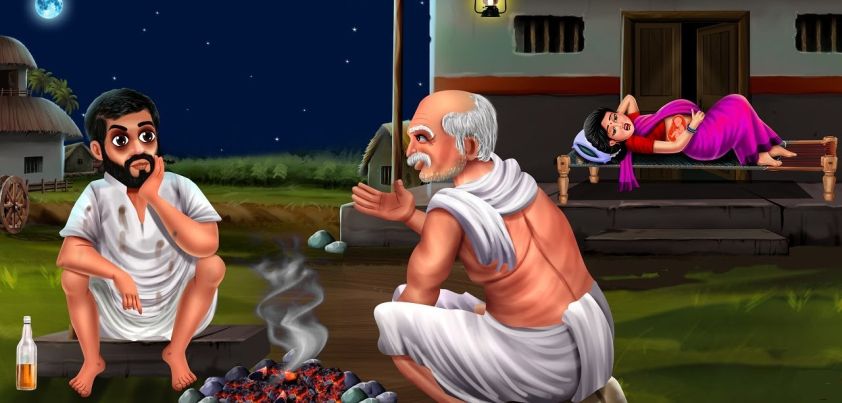 In modern terms, this 1935 story from Premchand would be called a dark comedy. It follows father and son Chamars (one of the Dalit or “untouchable” sub-castes) as they go to buy a funeral shroud for the son’s deceased wife. The lazy but likeable pair will do anything to shirk work, and end up spending the donated shroud money on a boozy night in town. The story satirizes the caste system by pointing out that those who can never rise above their low birth position have no incentive in life other than survival. More…
In modern terms, this 1935 story from Premchand would be called a dark comedy. It follows father and son Chamars (one of the Dalit or “untouchable” sub-castes) as they go to buy a funeral shroud for the son’s deceased wife. The lazy but likeable pair will do anything to shirk work, and end up spending the donated shroud money on a boozy night in town. The story satirizes the caste system by pointing out that those who can never rise above their low birth position have no incentive in life other than survival. More…
The Guest
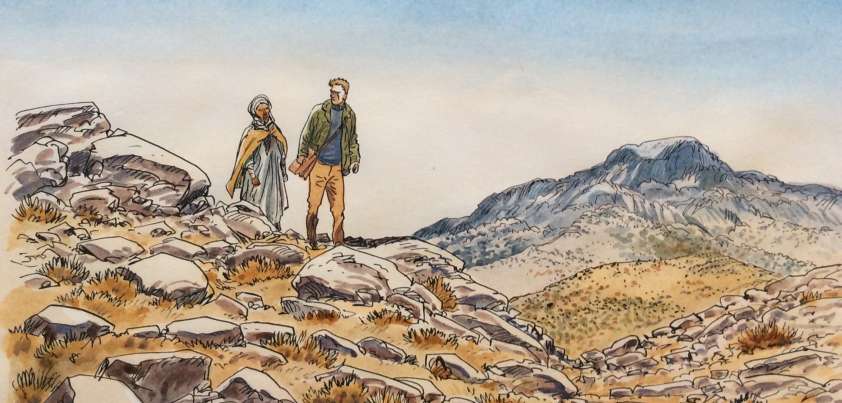 In this story by Albert Camus, a policeman orders Daru, a teacher from a remote Algerian school, to escort an alleged murderer to the nearest city. Camus was an early philosopher in the field of Existentialism. The story features several existential themes: the absurd (The situation Daru finds himself in.); the need to choose (Daru can follow the policeman’s order or set the man free; the man can go South to freedom or East to captivity.); and angst (Daru was in a “no win” situation. Whatever decision he makes will have unpleasant, and possibly deadly, consequences.) Other themes: honor, hospitality. More…
In this story by Albert Camus, a policeman orders Daru, a teacher from a remote Algerian school, to escort an alleged murderer to the nearest city. Camus was an early philosopher in the field of Existentialism. The story features several existential themes: the absurd (The situation Daru finds himself in.); the need to choose (Daru can follow the policeman’s order or set the man free; the man can go South to freedom or East to captivity.); and angst (Daru was in a “no win” situation. Whatever decision he makes will have unpleasant, and possibly deadly, consequences.) Other themes: honor, hospitality. More…
A Home near the Sea
 In this story by Kamala Das, an Indian woman angrily scolds her husband, a lazy drunkard, as she tells a fellow beggar how a year earlier he lost a secure job and caused them to be evicted from their hut. As the aging woman complains about her lot, the listener brings her to tears. He poetically extols the benefits of living in the open beside the sea, provides encouragement that things will improve, speaks to her of music and artistry, and likens her to the Hindu goddess Lakshmi. Themes include marriage (loyalty, jealousy, control and complacency), poverty, negativity, dreams, generosity. More…
In this story by Kamala Das, an Indian woman angrily scolds her husband, a lazy drunkard, as she tells a fellow beggar how a year earlier he lost a secure job and caused them to be evicted from their hut. As the aging woman complains about her lot, the listener brings her to tears. He poetically extols the benefits of living in the open beside the sea, provides encouragement that things will improve, speaks to her of music and artistry, and likens her to the Hindu goddess Lakshmi. Themes include marriage (loyalty, jealousy, control and complacency), poverty, negativity, dreams, generosity. More…
Tobermory
 This story is from H.H. Munro (aka Saki)’s Chronicles of Clovis, which follows the exploits of a spoiled, upper-class young man as he causes mischief among Edwardian high society. Clovis attends a weekend house-party. Among the other guests is a visiting scientist who was invited in the hope that his cleverness would contribute to the general entertainment. All are amazed when the scientist teaches Tobermory, the family house-cat, to speak perfect English. However, their wonder soon turns to anger at some of the things Tobermory has to say. This seals Tobermory’s fate. He knows too much and must be silenced! More…
This story is from H.H. Munro (aka Saki)’s Chronicles of Clovis, which follows the exploits of a spoiled, upper-class young man as he causes mischief among Edwardian high society. Clovis attends a weekend house-party. Among the other guests is a visiting scientist who was invited in the hope that his cleverness would contribute to the general entertainment. All are amazed when the scientist teaches Tobermory, the family house-cat, to speak perfect English. However, their wonder soon turns to anger at some of the things Tobermory has to say. This seals Tobermory’s fate. He knows too much and must be silenced! More…
With All Flags Flying
 An unusual aspect of this Anne Tyler story about an eighty-two-year-old man going into an “old folks’ home” is that he is doing it out of choice and on his own terms. The old man has renounced the material world. For him, the most important possessions in life are his independence and dignity. Although he has a loving family who would gladly house and care for him, he is ashamed of his growing weakness and steadfastly (and somewhat selfishly) refuses to be loved at any cost. Themes: aging, independence, frugality/minimalism, family, pride, stubbornness.
An unusual aspect of this Anne Tyler story about an eighty-two-year-old man going into an “old folks’ home” is that he is doing it out of choice and on his own terms. The old man has renounced the material world. For him, the most important possessions in life are his independence and dignity. Although he has a loving family who would gladly house and care for him, he is ashamed of his growing weakness and steadfastly (and somewhat selfishly) refuses to be loved at any cost. Themes: aging, independence, frugality/minimalism, family, pride, stubbornness.
More…
Dominoes
 Jack Agüeros cleverly uses a game of dominoes to illustrate two common themes affecting Puerto Rican immigrants living in the United States: fate vs. free will, and the Latin American concept of machismo. Fate is mirrored by the game and its outcome. Is it over as soon as you get your hand, as Tito says, or a game of skill where you can influence the result? Machismo (being seen as a man among men) introduces several sub-themes: pride, patronization of women, competitiveness, protection of honor, success with women, insecurity, and the ever-present prospect of violence. More…
Jack Agüeros cleverly uses a game of dominoes to illustrate two common themes affecting Puerto Rican immigrants living in the United States: fate vs. free will, and the Latin American concept of machismo. Fate is mirrored by the game and its outcome. Is it over as soon as you get your hand, as Tito says, or a game of skill where you can influence the result? Machismo (being seen as a man among men) introduces several sub-themes: pride, patronization of women, competitiveness, protection of honor, success with women, insecurity, and the ever-present prospect of violence. More…
A Municipal Report
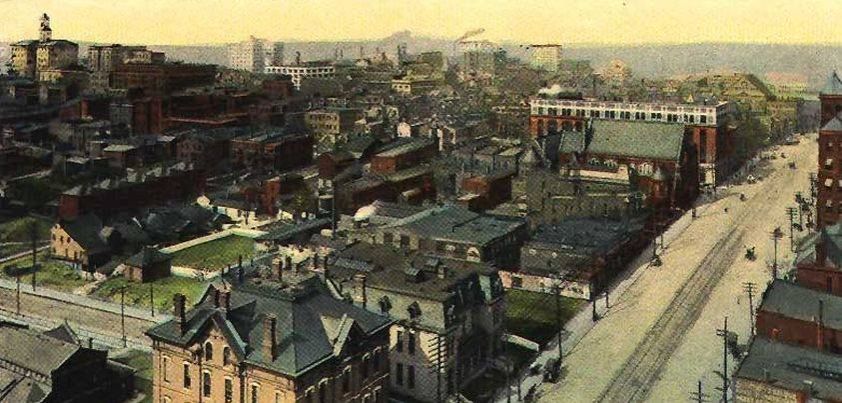 W. S. Porter (aka O. Henry) wrote over 600 short stories, of which some critics consider this to be one of the best. The plot involves what happens between the unnamed narrator, three main characters, and a torn dollar bill that keeps coming back to its original owner. The characters: Azalea Adair, a self-educated, gentle lady of the old South; Major Caswell, a cruel husband who treats her badly; and Uncle Caesar, a kind African-American man with a royal bearing who tries to help Azalea. Themes: pretense, pride, change, domestic violence, loyalty, self-learning and the power of imagination. More…
W. S. Porter (aka O. Henry) wrote over 600 short stories, of which some critics consider this to be one of the best. The plot involves what happens between the unnamed narrator, three main characters, and a torn dollar bill that keeps coming back to its original owner. The characters: Azalea Adair, a self-educated, gentle lady of the old South; Major Caswell, a cruel husband who treats her badly; and Uncle Caesar, a kind African-American man with a royal bearing who tries to help Azalea. Themes: pretense, pride, change, domestic violence, loyalty, self-learning and the power of imagination. More…
The Jilting of Granny Weatherall
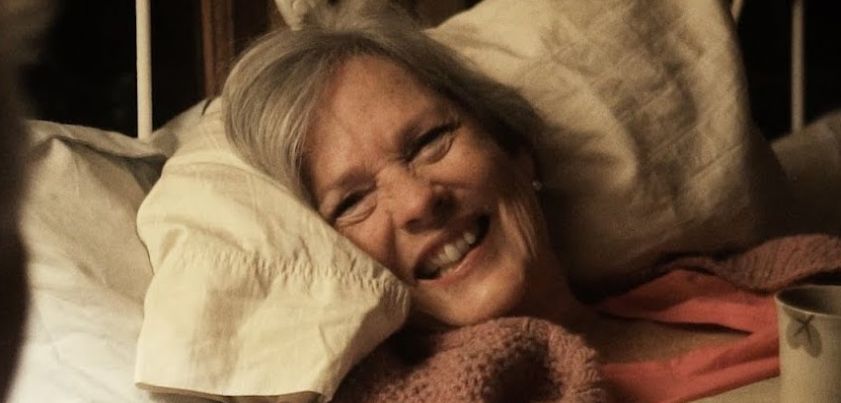 This story from Katherine Porter describes the disoriented thoughts and recollections of a feisty eighty-year-old (Granny Weatherall) as she lies dying in the house of one of her daughters. Satisfied with her life, she awaits a sign from God to say that her time has come. In her last moments, she likens the absence of such a sign to being left standing at the altar sixty earlier. Major themes are perseverance, motherhood and faith. Other themes: aging and death, loss (over the death of husband John and daughter Hapsy), betrayal and repressed anger (over being jilted by George). More…
This story from Katherine Porter describes the disoriented thoughts and recollections of a feisty eighty-year-old (Granny Weatherall) as she lies dying in the house of one of her daughters. Satisfied with her life, she awaits a sign from God to say that her time has come. In her last moments, she likens the absence of such a sign to being left standing at the altar sixty earlier. Major themes are perseverance, motherhood and faith. Other themes: aging and death, loss (over the death of husband John and daughter Hapsy), betrayal and repressed anger (over being jilted by George). More…
Where Is Here?
 One of the beauties of this unsettling story by Joyce Carol Oates is that it is open to many interpretations depending on how much one reads into the visitor’s identity and purpose. At its simplest, the story involves a man behaving strangely as he confronts pleasant and unpleasant memories during a visit to his childhood home. More imaginative interpretations include revisiting a scene of child abuse and/or patricide, and a ghostly warning from the past or future about looming danger or a cursed house. Themes: (general) nostalgia, connection, domestic violence; (through the riddles) mortality, time, infinity. More…
One of the beauties of this unsettling story by Joyce Carol Oates is that it is open to many interpretations depending on how much one reads into the visitor’s identity and purpose. At its simplest, the story involves a man behaving strangely as he confronts pleasant and unpleasant memories during a visit to his childhood home. More imaginative interpretations include revisiting a scene of child abuse and/or patricide, and a ghostly warning from the past or future about looming danger or a cursed house. Themes: (general) nostalgia, connection, domestic violence; (through the riddles) mortality, time, infinity. More…
The Return
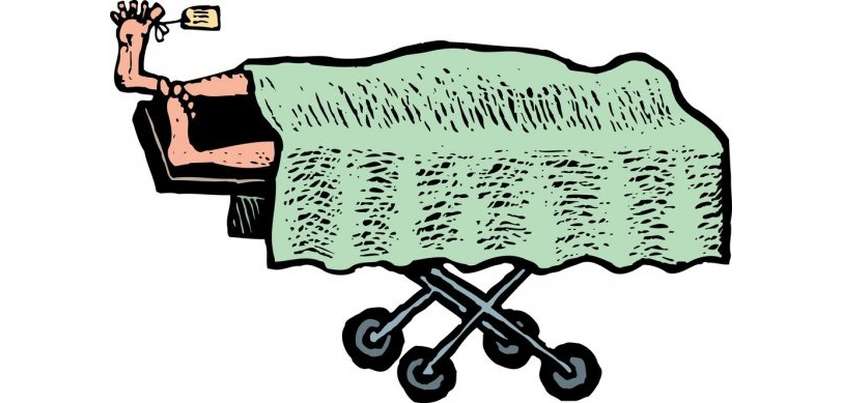 Roberto Bolaño’s The Return is not your usual Gothic ghost story. The mood (though not the storyline) is more like the Patrick Swayze movie Ghost, which is referred to in the story. When a man’s ghost finds that it can communicate with a famous French fashion designer, it decides to spend its time on earth with him. The two hadn’t known each other in real life, and only met because the fashion designer had paid to have sex with the man’s corpse! Themes: death, the afterlife, necrophilia, disillusionment, insecurity, isolation, empathy. More…
Roberto Bolaño’s The Return is not your usual Gothic ghost story. The mood (though not the storyline) is more like the Patrick Swayze movie Ghost, which is referred to in the story. When a man’s ghost finds that it can communicate with a famous French fashion designer, it decides to spend its time on earth with him. The two hadn’t known each other in real life, and only met because the fashion designer had paid to have sex with the man’s corpse! Themes: death, the afterlife, necrophilia, disillusionment, insecurity, isolation, empathy. More…
Boys and Girls
 The major themes of this story by Alice Munro are coming of age and gender roles. Set on a Canadian fox farm, a young tomboy prefers to spend her time outdoors with her father rather than indoors helping her mother. When she overhears her mother talking about how happy she will be when the girl is older and can help more around the house, she feels betrayed. Her outlook slowly changes as she gets older, culminating in a rebellious act that her father dismisses with the words She’s only a girl. Other themes: family relationships, loss of innocence, self-awareness. More…
The major themes of this story by Alice Munro are coming of age and gender roles. Set on a Canadian fox farm, a young tomboy prefers to spend her time outdoors with her father rather than indoors helping her mother. When she overhears her mother talking about how happy she will be when the girl is older and can help more around the house, she feels betrayed. Her outlook slowly changes as she gets older, culminating in a rebellious act that her father dismisses with the words She’s only a girl. Other themes: family relationships, loss of innocence, self-awareness. More…
Exchanging Glances
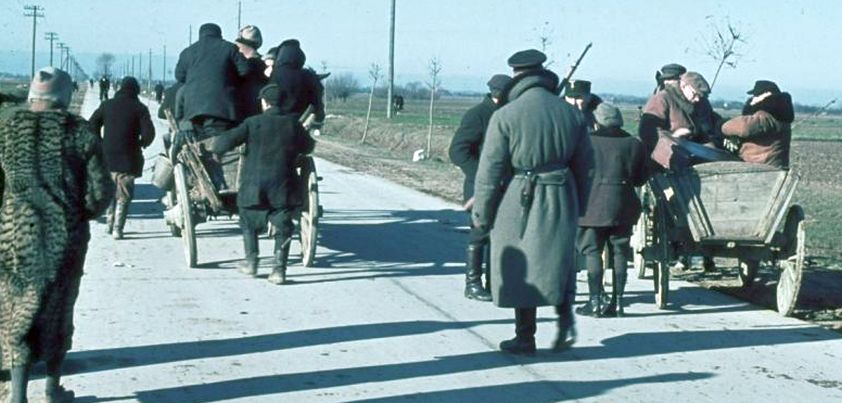 This autobiographical story by Christa Wolf provides a unique perspective on the final days of World War II, told from the viewpoint of a middle-aged German woman looking back on her time as a teenager fleeing the Russians with her family. Part of a column of refugees, she recounts being strafed by American fighter planes, learning of Hitler’s death, encountering a retreating Wehrmacht unit, and coming face-to-face with liberated concentration camp survivors. Ironically, some confronting experiences on reaching the “safety” of American lines leave her in tears. Themes: war, the vagaries of memory/selective amnesia, changing perspectives, dislocation, loss, death. More…
This autobiographical story by Christa Wolf provides a unique perspective on the final days of World War II, told from the viewpoint of a middle-aged German woman looking back on her time as a teenager fleeing the Russians with her family. Part of a column of refugees, she recounts being strafed by American fighter planes, learning of Hitler’s death, encountering a retreating Wehrmacht unit, and coming face-to-face with liberated concentration camp survivors. Ironically, some confronting experiences on reaching the “safety” of American lines leave her in tears. Themes: war, the vagaries of memory/selective amnesia, changing perspectives, dislocation, loss, death. More…
Why Don’t You Dance?
 This minimalist story from Raymond Carver captures a brief encounter between a middle-aged man holding a yard sale and a young couple interested in buying furniture. We learn very little about the man other than that he was once in a relationship, is selling almost everything he owns, and probably drinks too much. The man offers the couple whiskey, puts on some music, and suggests that they dance. Carver leaves it to the reader to interpret what happens next. All we know is that the girl is troubled by it for weeks. Possible themes: alcoholism, loneliness, despair, compassion, connection, confusion. More…
This minimalist story from Raymond Carver captures a brief encounter between a middle-aged man holding a yard sale and a young couple interested in buying furniture. We learn very little about the man other than that he was once in a relationship, is selling almost everything he owns, and probably drinks too much. The man offers the couple whiskey, puts on some music, and suggests that they dance. Carver leaves it to the reader to interpret what happens next. All we know is that the girl is troubled by it for weeks. Possible themes: alcoholism, loneliness, despair, compassion, connection, confusion. More…
The Killers
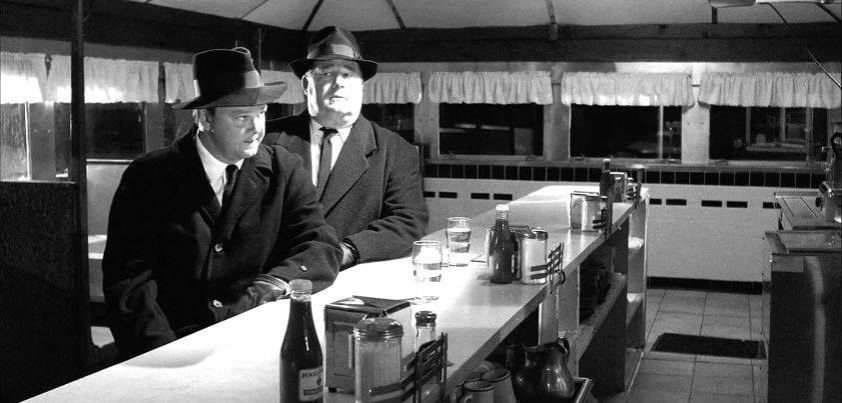 In this coming of age story by Ernest Hemingway, two hit men come to a small-town restaurant to shoot a man to oblige a friend. The three men already in the restaurant (its manager, cook and a young customer) are detained but, when the intended victim (a prize-fighter) doesn’t turn up, they are released and the hit men leave. The customer hurries to warn the prize-fighter. However, the poor man appears to have accepted his fate, saying there is nothing anyone can do to save him. Themes include crime, passivity (“looking the other way”), futility, acceptance, courage, manhood, disillusionment. More…
In this coming of age story by Ernest Hemingway, two hit men come to a small-town restaurant to shoot a man to oblige a friend. The three men already in the restaurant (its manager, cook and a young customer) are detained but, when the intended victim (a prize-fighter) doesn’t turn up, they are released and the hit men leave. The customer hurries to warn the prize-fighter. However, the poor man appears to have accepted his fate, saying there is nothing anyone can do to save him. Themes include crime, passivity (“looking the other way”), futility, acceptance, courage, manhood, disillusionment. More…
There Will Come Soft Rains
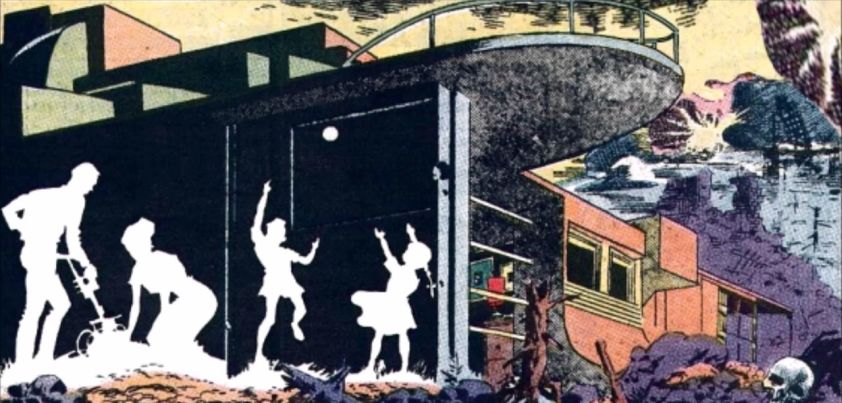 This famous science-fiction story from Ray Bradbury chronicles the last day in the ‘life’ of an automated house that has survived nuclear war. Although the house’s inhabitants are dead, represented by shadows on the outside walls, it has continued its daily cycle of programmed activity. Major themes include two warnings: the danger of nuclear war, and taking technology too far. In replacing almost all human tasks in their daily life, the householders were dependent on technology. Ironically, that same technology built the bombs that destroyed them. Other themes: death (the dog, house and humankind), nature (the only survivor), dystopia. More…
This famous science-fiction story from Ray Bradbury chronicles the last day in the ‘life’ of an automated house that has survived nuclear war. Although the house’s inhabitants are dead, represented by shadows on the outside walls, it has continued its daily cycle of programmed activity. Major themes include two warnings: the danger of nuclear war, and taking technology too far. In replacing almost all human tasks in their daily life, the householders were dependent on technology. Ironically, that same technology built the bombs that destroyed them. Other themes: death (the dog, house and humankind), nature (the only survivor), dystopia. More…
Forty-Five a Month
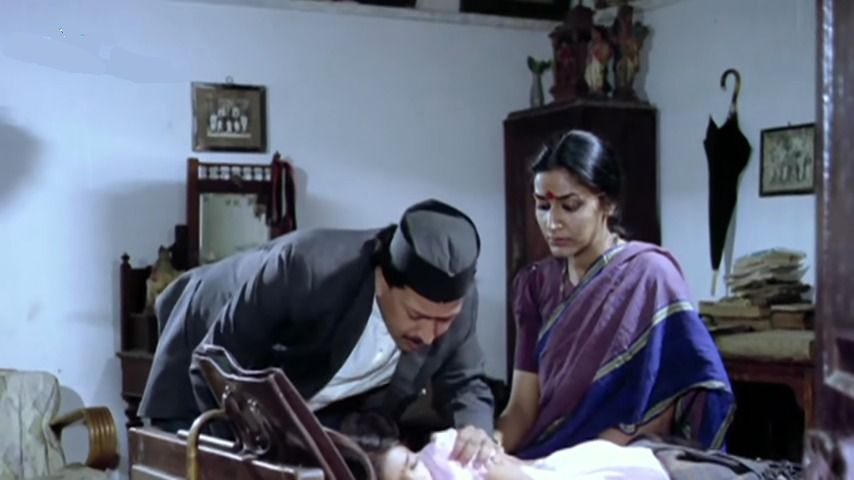 In this 1940s story by R. K. Narayan, a working-class father is tortured by guilt over his inability to spend time with his young daughter and provide some of the luxuries other children enjoy. When the chronically overworked man asks for an evening off to take her to a movie, he is refused. He is on the point of resignation when offered a small raise that the family needs badly. In a poignant moment, he arrives home late and finds his daughter asleep, still dressed for the movie. Themes: childhood innocence, parent-child relationships, powerlessness, exploitation, financial struggle, sacrifice, guilt. More…
In this 1940s story by R. K. Narayan, a working-class father is tortured by guilt over his inability to spend time with his young daughter and provide some of the luxuries other children enjoy. When the chronically overworked man asks for an evening off to take her to a movie, he is refused. He is on the point of resignation when offered a small raise that the family needs badly. In a poignant moment, he arrives home late and finds his daughter asleep, still dressed for the movie. Themes: childhood innocence, parent-child relationships, powerlessness, exploitation, financial struggle, sacrifice, guilt. More…
The Three Questions
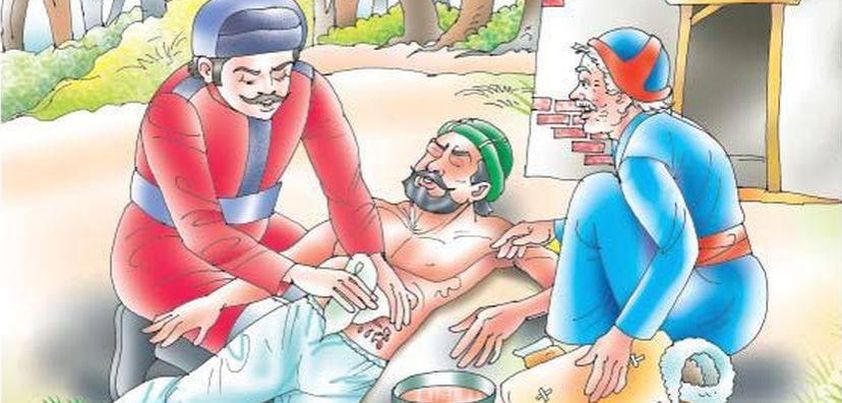 This parable from Leo Tolstoy is about how to succeed in life. A king believes he would never fail in a task if he always knew three things: What is the best time to begin? Who are the most important people to have around you? and What is the most important thing to spend your time doing? He offers a reward for the answers, but neither his wisest counselors nor others who come to claim it can help. An experience with a forest hermit and injured assassin teach him what he needs to know. Themes: wisdom, humility, kindness, forgiveness, morality. More…
This parable from Leo Tolstoy is about how to succeed in life. A king believes he would never fail in a task if he always knew three things: What is the best time to begin? Who are the most important people to have around you? and What is the most important thing to spend your time doing? He offers a reward for the answers, but neither his wisest counselors nor others who come to claim it can help. An experience with a forest hermit and injured assassin teach him what he needs to know. Themes: wisdom, humility, kindness, forgiveness, morality. More…
The Judgment (The Verdict)
 On the surface, this story by Franz Kafka is about a troubled man’s relationship with his frail but dominating father. The father thinks his son is trying to ease him out of their successful business. The son communicates regularly with a ‘friend’ in Russia, who may be an imaginary alter ego. The father says the friend would be more a son after my own heart, and judges his son guilty of selfishness and betrayal. He sentences him to death by drowning, which the son promptly carries out. Themes: loneliness, insecurity, bachelorhood vs. marriage, patriarchy, father-son relationships, crime, guilt, punishment. More…
On the surface, this story by Franz Kafka is about a troubled man’s relationship with his frail but dominating father. The father thinks his son is trying to ease him out of their successful business. The son communicates regularly with a ‘friend’ in Russia, who may be an imaginary alter ego. The father says the friend would be more a son after my own heart, and judges his son guilty of selfishness and betrayal. He sentences him to death by drowning, which the son promptly carries out. Themes: loneliness, insecurity, bachelorhood vs. marriage, patriarchy, father-son relationships, crime, guilt, punishment. More…
The Ring
 In this coming of age story by Isak Dinesen (aka Karen Blixen), a recently married nineteen-year-old woman from a wealthy family is confronted by violence for the first time. Having led a sheltered life, the woman has an innocent, child-like view of the world, and in particular her husband’s commitment to improving their farm. Her married bliss is shattered by a chance encounter with a man covered in blood who is on the run for theft and murder. The triggers a re-evaluation of her naïve views on life and marriage. Themes: loss of innocence, responsibility, sexuality, violence, identity/self-awareness, consciousness. More…
In this coming of age story by Isak Dinesen (aka Karen Blixen), a recently married nineteen-year-old woman from a wealthy family is confronted by violence for the first time. Having led a sheltered life, the woman has an innocent, child-like view of the world, and in particular her husband’s commitment to improving their farm. Her married bliss is shattered by a chance encounter with a man covered in blood who is on the run for theft and murder. The triggers a re-evaluation of her naïve views on life and marriage. Themes: loss of innocence, responsibility, sexuality, violence, identity/self-awareness, consciousness. More…
The Bear
 William Faulkner published several versions of this classic story, the most notable of which are a short story that appeared in the Saturday Evening Post and a novel-sized chapter in his book, Go Down, Moses. In the short story, an unnamed boy becomes a skilled woodsman over six years of annual hunting trips. His dream is to bag “Old Ben”, a huge bear that has terrorized farmers on the fringes of their hunting grounds for years. When he finally gets the chance, he doesn’t shoot. Themes: family, land and people ownership, racial identity, love of and respect for the wilderness. More…
William Faulkner published several versions of this classic story, the most notable of which are a short story that appeared in the Saturday Evening Post and a novel-sized chapter in his book, Go Down, Moses. In the short story, an unnamed boy becomes a skilled woodsman over six years of annual hunting trips. His dream is to bag “Old Ben”, a huge bear that has terrorized farmers on the fringes of their hunting grounds for years. When he finally gets the chance, he doesn’t shoot. Themes: family, land and people ownership, racial identity, love of and respect for the wilderness. More…
A Guide to Berlin
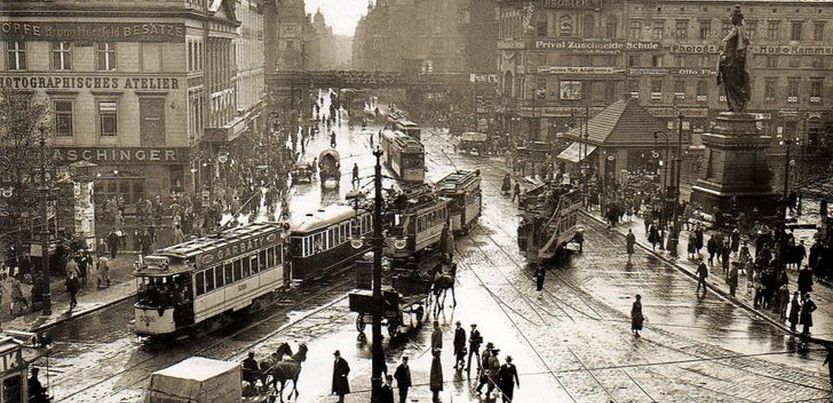 This early story by Vladimir Nabokov is not about places to see in Berlin, but rather the narrator’s observations of some everyday aspects of city life. Through a series of vignettes he describes pipes left on the footpath, the streetcar system, people he sees working on the streets, the city zoo and the pub in which he is drinking with a friend. The major theme is the relationship between time and memory: how some things we experience today will become “future recollections”, and the artist’s duty to record his/her experiences in detail for the benefit of future generations. More…
This early story by Vladimir Nabokov is not about places to see in Berlin, but rather the narrator’s observations of some everyday aspects of city life. Through a series of vignettes he describes pipes left on the footpath, the streetcar system, people he sees working on the streets, the city zoo and the pub in which he is drinking with a friend. The major theme is the relationship between time and memory: how some things we experience today will become “future recollections”, and the artist’s duty to record his/her experiences in detail for the benefit of future generations. More…
Henne Fire
 Set in pre-World War 1 Poland, this story by Isaac Bashevis Singer explores how a small Jewish community interacts with a seemingly deranged woman who the narrator describes as not a human being but a fire from Gehenna [hell]. Her abusive behaviour forces her family to flee their home and, in keeping with the biblical analogy, small fires tend to pop up around her wherever she lives. A major theme of the story is community, reflected in the support she receives despite her offensive behaviour and the fire risk to neighbors. Other themes include madness, fear, alcohol abuse, the supernatural. More…
Set in pre-World War 1 Poland, this story by Isaac Bashevis Singer explores how a small Jewish community interacts with a seemingly deranged woman who the narrator describes as not a human being but a fire from Gehenna [hell]. Her abusive behaviour forces her family to flee their home and, in keeping with the biblical analogy, small fires tend to pop up around her wherever she lives. A major theme of the story is community, reflected in the support she receives despite her offensive behaviour and the fire risk to neighbors. Other themes include madness, fear, alcohol abuse, the supernatural. More…
The Garden Party
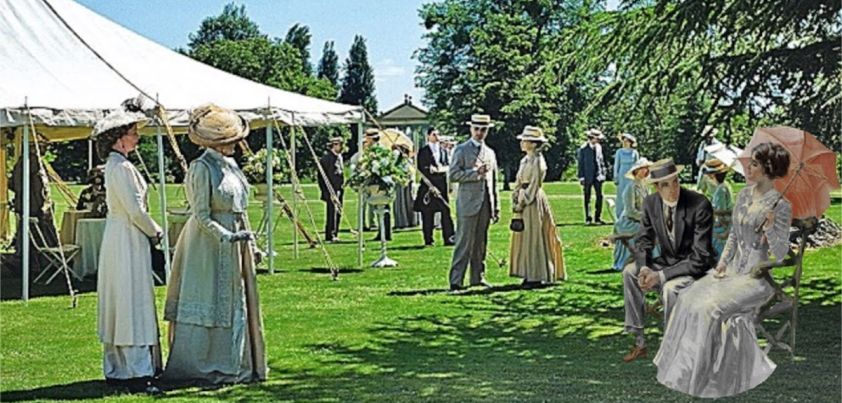 Because of the complex issues raised, this is one of Katherine Mansfield’s most highly acclaimed stories. A wealthy family enjoy an ostentatious garden party in the spacious grounds of their mansion, fully aware that the father of a poverty-stricken family living within hearing distance died in an accident earlier the same day. Only one family member (a teen-aged girl) is sensitive to the poor family’s plight. She visits the house to offer condolences, and experiences an epiphany when unexpectedly ushered in to view the body. Themes include social class (class-consciousness, pretention, insensitivity towards others), poverty, innocence, humanity, coming of age. More…
Because of the complex issues raised, this is one of Katherine Mansfield’s most highly acclaimed stories. A wealthy family enjoy an ostentatious garden party in the spacious grounds of their mansion, fully aware that the father of a poverty-stricken family living within hearing distance died in an accident earlier the same day. Only one family member (a teen-aged girl) is sensitive to the poor family’s plight. She visits the house to offer condolences, and experiences an epiphany when unexpectedly ushered in to view the body. Themes include social class (class-consciousness, pretention, insensitivity towards others), poverty, innocence, humanity, coming of age. More…
Stories of the Bad & Good Little Boys
 We are presenting these stories from Samuel Clemens (aka Mark Twain) together because, although the characters appear to be opposites, they actually support the same themes: 1) all people have a bad and/or selfish side; and 2) whether good or bad, people don’t always get the reward/punishment they deserve. While the bad boy appears inherently evil, the “good” boy’s motivation is his selfish wish for eternal praise. With its over-the-top sarcasm, the story of the bad little boy has an even more depressing message… bad boys grow into bad men, and the worst of them end up becoming successful politicians! More…
We are presenting these stories from Samuel Clemens (aka Mark Twain) together because, although the characters appear to be opposites, they actually support the same themes: 1) all people have a bad and/or selfish side; and 2) whether good or bad, people don’t always get the reward/punishment they deserve. While the bad boy appears inherently evil, the “good” boy’s motivation is his selfish wish for eternal praise. With its over-the-top sarcasm, the story of the bad little boy has an even more depressing message… bad boys grow into bad men, and the worst of them end up becoming successful politicians! More…
The Sea of Lost Time
 The seaside town in this story by Gabriel Garcia Marquez is a smelly, unpleasant place. With every incoming tide, the ocean brings garbage and rotting fish. Many people have moved away; the town is dying. Things change when a local man, Tobias, notices something different about the sea breeze. It smells like roses. Weekend visitors begin to arrive. There is music and dancing again. One of the visitors is a strange foreigner with bags of money. He gives it away to people who ‘do things’ for him, and one day shows Tobias the secret of what lies beneath the waves. More…
The seaside town in this story by Gabriel Garcia Marquez is a smelly, unpleasant place. With every incoming tide, the ocean brings garbage and rotting fish. Many people have moved away; the town is dying. Things change when a local man, Tobias, notices something different about the sea breeze. It smells like roses. Weekend visitors begin to arrive. There is music and dancing again. One of the visitors is a strange foreigner with bags of money. He gives it away to people who ‘do things’ for him, and one day shows Tobias the secret of what lies beneath the waves. More…
Games at Twilight
 This story from Anita Desai highlights what children did in the evening before the electronic age: played together outside! Although set in India, it could have taken place almost anywhere in the world. A sensitive young boy playing ‘tag’ with his siblings courageously hides out in a dark and threatening shed. He loses track of time and is shattered when he emerges to claim the glory and finds the other children have forgotten about him and moved on. Major theme: the disillusionment that comes with confronting your potential insignificance in the world. Other themes: identity, fear, courage, expectation, disappointment, humiliation. More…
This story from Anita Desai highlights what children did in the evening before the electronic age: played together outside! Although set in India, it could have taken place almost anywhere in the world. A sensitive young boy playing ‘tag’ with his siblings courageously hides out in a dark and threatening shed. He loses track of time and is shattered when he emerges to claim the glory and finds the other children have forgotten about him and moved on. Major theme: the disillusionment that comes with confronting your potential insignificance in the world. Other themes: identity, fear, courage, expectation, disappointment, humiliation. More…
The Storm / At the ‘Cadian Ball
 Kate Chopin’s The Storm is widely considered one of her best stories. As a wild storm rages outside, a farmer’s wife (Calixta) and wealthy plantation-owner who had stopped for shelter (Alcée) engage in wild, stormy sex inside. Although both are married, neither feels guilty about the tryst. Afterwards, Calixta continues family life as normal, though seemingly more contented. Themes: family, passionless marriage, lust. In order to fully understand the characters, it is helpful to read the story’s prequel, At the ‘Cadian Ball. Calixta and Alcée were once infatuated with each other, but class and race differences kept them apart. More…
Kate Chopin’s The Storm is widely considered one of her best stories. As a wild storm rages outside, a farmer’s wife (Calixta) and wealthy plantation-owner who had stopped for shelter (Alcée) engage in wild, stormy sex inside. Although both are married, neither feels guilty about the tryst. Afterwards, Calixta continues family life as normal, though seemingly more contented. Themes: family, passionless marriage, lust. In order to fully understand the characters, it is helpful to read the story’s prequel, At the ‘Cadian Ball. Calixta and Alcée were once infatuated with each other, but class and race differences kept them apart. More…
Dead Stars
 This story by Paz Marquez Benitez is set in a culture and time where honor outweighs love. A young lawyer delays marrying his fiancé for three years because it doesn’t feel right. Although he falls in love with another, he keeps his word, marries the fiancé, and dreams of the other woman for eight years. He likens the dreams to seeing the light of dead stars, long extinguished, yet seemingly still in their appointed places in the heavens. When he sees the other woman again, the light has gone out. Themes: courtship, fidelity, forbidden love, honor, regret, understanding. More…
This story by Paz Marquez Benitez is set in a culture and time where honor outweighs love. A young lawyer delays marrying his fiancé for three years because it doesn’t feel right. Although he falls in love with another, he keeps his word, marries the fiancé, and dreams of the other woman for eight years. He likens the dreams to seeing the light of dead stars, long extinguished, yet seemingly still in their appointed places in the heavens. When he sees the other woman again, the light has gone out. Themes: courtship, fidelity, forbidden love, honor, regret, understanding. More…
Through the Tunnel
 This coming of age story by Doris Lessing takes place as a British mother and her eleven-year-old son holiday at a foreign seaside resort. While the mother enjoys their regular “safe” swimming beach, she allows the boy to explore a nearby rocky cove. There, he watches local teenage boys as they dive from rocks and appear to navigate their way through a long underwater tunnel. Determined to match the dangerous feat and prove he is no longer a child, he practices for several days before trying himself. Themes include identity, isolation, independence, determination, courage, self-discipline and self-control. More…
This coming of age story by Doris Lessing takes place as a British mother and her eleven-year-old son holiday at a foreign seaside resort. While the mother enjoys their regular “safe” swimming beach, she allows the boy to explore a nearby rocky cove. There, he watches local teenage boys as they dive from rocks and appear to navigate their way through a long underwater tunnel. Determined to match the dangerous feat and prove he is no longer a child, he practices for several days before trying himself. Themes include identity, isolation, independence, determination, courage, self-discipline and self-control. More…
Dr Heidegger’s Experiment
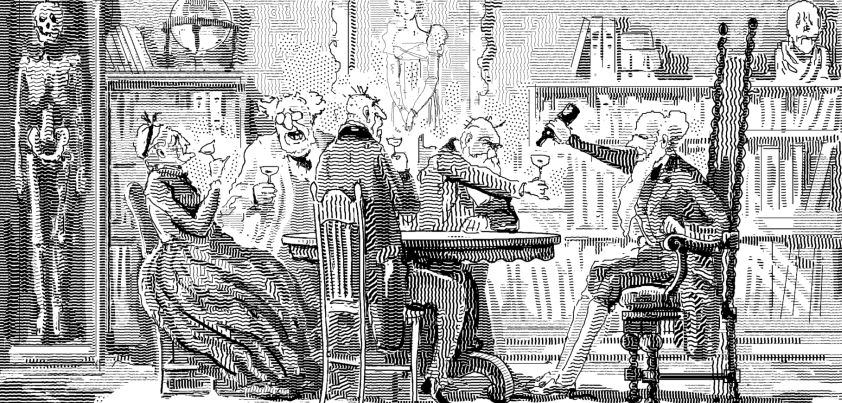 In this story from Nathaniel Hawthorne, an ageing scientist invites four elderly friends to participate in an experiment ostensibly designed to test the efficacy of the waters of the fabled fountain of youth. The inclusion of several supernatural elements in the plot clouds whether the “water’s” effect was real, imagined or faked by substituting alcohol. However, as each friend had a major character flaw in their youth, it is probable that the experiment had a different thesis, which is proved by their behavior after drinking. Themes: ageing, failing to learn from past mistakes, obsession with youthfulness and appearance, the supernatural. More…
In this story from Nathaniel Hawthorne, an ageing scientist invites four elderly friends to participate in an experiment ostensibly designed to test the efficacy of the waters of the fabled fountain of youth. The inclusion of several supernatural elements in the plot clouds whether the “water’s” effect was real, imagined or faked by substituting alcohol. However, as each friend had a major character flaw in their youth, it is probable that the experiment had a different thesis, which is proved by their behavior after drinking. Themes: ageing, failing to learn from past mistakes, obsession with youthfulness and appearance, the supernatural. More…
Marriage Is a Private Affair
 The major themes of this early story by Chinua Achebe are generational conflict and change/progress. A young Nigerian couple living in 1950s Lagos decide to get married. They are from different ethnic groups, which causes tension with the man’s village-based father. He is from the Igbo ethnic group in which marriages are traditionally arranged by parents and restricted to others within the group. When the couple marry in defiance of tradition, the man’s father cuts off contact. Eight years later, a letter and rainstorm cause him to regret the decision. Other themes: family, tradition, bigotry, gender roles, defiance, pride, remorse. More…
The major themes of this early story by Chinua Achebe are generational conflict and change/progress. A young Nigerian couple living in 1950s Lagos decide to get married. They are from different ethnic groups, which causes tension with the man’s village-based father. He is from the Igbo ethnic group in which marriages are traditionally arranged by parents and restricted to others within the group. When the couple marry in defiance of tradition, the man’s father cuts off contact. Eight years later, a letter and rainstorm cause him to regret the decision. Other themes: family, tradition, bigotry, gender roles, defiance, pride, remorse. More…
The Enormous Radio
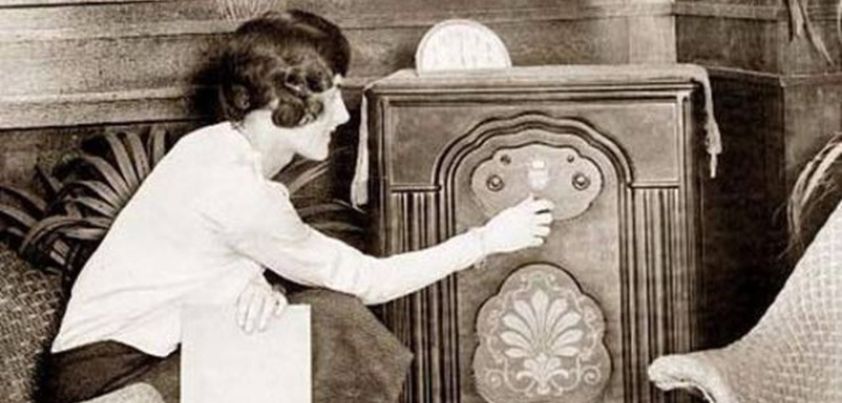 Like many John Cheever stories, the major themes of The Enormous Radio are appearances vs. reality and the myth of urban bliss. Other themes include eavesdropping, obsession, secrecy, smugness, self-delusion and hypocrisy. A seemingly contented couple’s life changes when a malfunctioning radio begins to pick up conversations from people in surrounding apartments. The woman becomes obsessed with listening in and, after learning her neighbors’ secrets about affairs, marital and financial problems, etc., begins to look down on them. This feeling of superiority is soon dashed when her husband points out some unsavory aspects of her own past. More…
Like many John Cheever stories, the major themes of The Enormous Radio are appearances vs. reality and the myth of urban bliss. Other themes include eavesdropping, obsession, secrecy, smugness, self-delusion and hypocrisy. A seemingly contented couple’s life changes when a malfunctioning radio begins to pick up conversations from people in surrounding apartments. The woman becomes obsessed with listening in and, after learning her neighbors’ secrets about affairs, marital and financial problems, etc., begins to look down on them. This feeling of superiority is soon dashed when her husband points out some unsavory aspects of her own past. More…
Where I’m Calling From
 This Raymond Carver story describes how a friendship that develops between two strangers attending an alcohol drying-out retreat puts both on the road to recovery. The story’s message is that while acceptance that you have an alcohol problem is an important first step, true recovery begins when you acknowledge the damage it has caused to the lives of yourself and your loved ones, and are prepared to face up to your demons. The story also recognizes that, post-recovery, there is a high likelihood of a relapse. Themes: substance abuse, alienation, loneliness and the need for human connection, self-awareness, fear, hope.
This Raymond Carver story describes how a friendship that develops between two strangers attending an alcohol drying-out retreat puts both on the road to recovery. The story’s message is that while acceptance that you have an alcohol problem is an important first step, true recovery begins when you acknowledge the damage it has caused to the lives of yourself and your loved ones, and are prepared to face up to your demons. The story also recognizes that, post-recovery, there is a high likelihood of a relapse. Themes: substance abuse, alienation, loneliness and the need for human connection, self-awareness, fear, hope.
Gooseberries
 For me, the major theme of this philosophical story by Anton Chekhov (the nature of happiness) is conveyed through the symbolization of the plateful of gooseberries. This can be expressed in two seemingly conflicting idioms: one man’s (Ivan’s brother’s) sweet taste of success can leave a sour taste in someone else’s mouth. Put Chekhov’s way, complete happiness shouldn’t exist because it requires contributing to and/or being indifferent to the suffering of others; true fulfillment in life only comes from doing good. Other themes: obsession, greed, ego, class, isolation, mortality, city vs. country life, the beauty of nature. More…
For me, the major theme of this philosophical story by Anton Chekhov (the nature of happiness) is conveyed through the symbolization of the plateful of gooseberries. This can be expressed in two seemingly conflicting idioms: one man’s (Ivan’s brother’s) sweet taste of success can leave a sour taste in someone else’s mouth. Put Chekhov’s way, complete happiness shouldn’t exist because it requires contributing to and/or being indifferent to the suffering of others; true fulfillment in life only comes from doing good. Other themes: obsession, greed, ego, class, isolation, mortality, city vs. country life, the beauty of nature. More…
Beware of the Dog
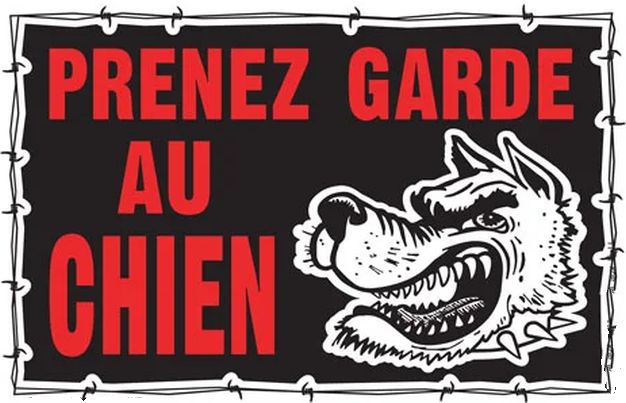 This story by Roald Dahl opens with a World War 2 fighter pilot trying to get his badly damaged plane back to England. As he muses about how stoically he will tell his ground crew that he has lost a leg, he is forced to bail out. He wakes up, his injuries already treated, in hospital. He is initially relieved to learn that he had landed in Brighton. However, over the next twenty-four hours, he gradually realizes that something is wrong. Themes: war casualties, courage, determination, deception (looks can be deceiving), duty.. More…
This story by Roald Dahl opens with a World War 2 fighter pilot trying to get his badly damaged plane back to England. As he muses about how stoically he will tell his ground crew that he has lost a leg, he is forced to bail out. He wakes up, his injuries already treated, in hospital. He is initially relieved to learn that he had landed in Brighton. However, over the next twenty-four hours, he gradually realizes that something is wrong. Themes: war casualties, courage, determination, deception (looks can be deceiving), duty.. More…
The Cow of the Barricades
 This story from Raja Rao takes place during India’s struggle for independence from British rule. It highlights two major aspects of the conflict: the people’s desire for self-government, and the division within the people between those who supported Gandhi’s directive of passive resistance and those who advocated violent confrontation. The symbol of Gandhian resolution is a revered cow (a holy animal in Hindu culture) which, like many such advocates over the years, is martyred for the cause after leading a crowd of peaceful protesters to barricades as fighting is about to begin. Themes: independence, faith, nonviolent resolution of conflict. More…
This story from Raja Rao takes place during India’s struggle for independence from British rule. It highlights two major aspects of the conflict: the people’s desire for self-government, and the division within the people between those who supported Gandhi’s directive of passive resistance and those who advocated violent confrontation. The symbol of Gandhian resolution is a revered cow (a holy animal in Hindu culture) which, like many such advocates over the years, is martyred for the cause after leading a crowd of peaceful protesters to barricades as fighting is about to begin. Themes: independence, faith, nonviolent resolution of conflict. More…
Stones in My Passway, Hellhound on My Trail
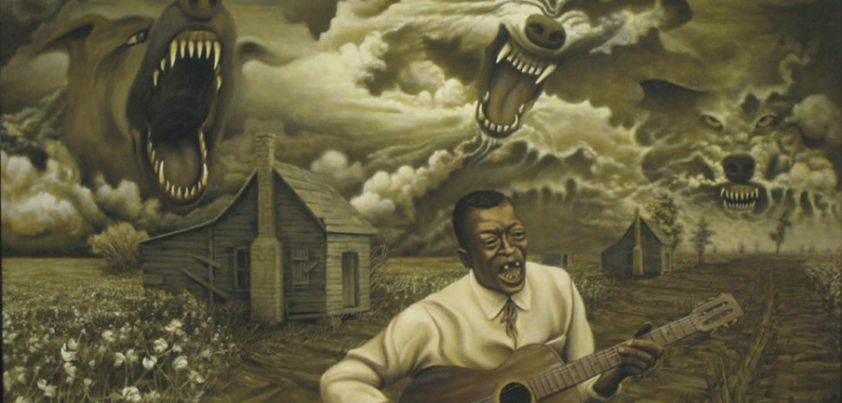 This story from T. C. Boyle is a fictionalized account of the last night in the life of American blues musician Robert Johnson. Although heralded today as a master of the blues, he received little acclaim while alive and led an itinerant, poorly disciplined life. A rumour circulating at the time was that Johnson had sold his soul to the devil in exchange for musical prowess. The story suggests that it was a jilted woman, rather than a hellhound collecting the devil’s due, that brought about his demise. Themes include death, fate vs. free will, music, self-indulgence and jealousy. More…
This story from T. C. Boyle is a fictionalized account of the last night in the life of American blues musician Robert Johnson. Although heralded today as a master of the blues, he received little acclaim while alive and led an itinerant, poorly disciplined life. A rumour circulating at the time was that Johnson had sold his soul to the devil in exchange for musical prowess. The story suggests that it was a jilted woman, rather than a hellhound collecting the devil’s due, that brought about his demise. Themes include death, fate vs. free will, music, self-indulgence and jealousy. More…